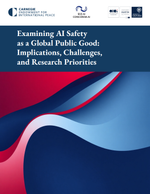Communication Biology
Zagajewski, A., Turner, P., Feehily, C. et al. Deep learning and single-cell phenotyping for rapid antimicrobial susceptibility detection in Escherichia coli. Commun Biol 6, 1164 (2023). https://doi.org/10.1038/s42003-023-05524-4
View Journal Article / Working PaperThe rise of antimicrobial resistance (AMR) is one of the greatest public health challenges, already causing up to 1.2 million deaths annually and rising. Current culture-based turnaround times for bacterial identification in clinical samples and antimicrobial susceptibility testing (AST) are typically 18–24 h. We present a novel proof-of-concept methodological advance in susceptibility testing based on the deep-learning of single-cell specific morphological phenotypes directly associated with antimicrobial susceptibility in Escherichia coli. Our models can reliably (80% single-cell accuracy) classify untreated and treated susceptible cells for a lab-reference fully susceptible E. coli strain, across four antibiotics (ciprofloxacin, gentamicin, rifampicin and co-amoxiclav). For ciprofloxacin, we demonstrate our models reveal significant (p < 0.001) differences between bacterial cell populations affected and unaffected by antibiotic treatment, and show that given treatment with a fixed concentration of 10 mg/L over 30 min these phenotypic effects correlate with clinical susceptibility defined by established clinical breakpoints. Deploying our approach on cell populations from six E. coli strains obtained from human bloodstream infections with varying degrees of ciprofloxacin resistance and treated with a range of ciprofloxacin concentrations, we show single-cell phenotyping has the potential to provide equivalent information to growth-based AST assays, but in as little as 30 min.




